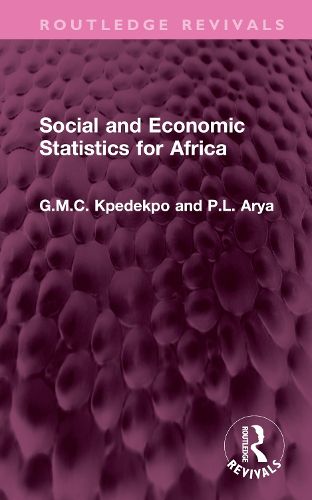Readings Newsletter
Become a Readings Member to make your shopping experience even easier.
Sign in or sign up for free!
You’re not far away from qualifying for FREE standard shipping within Australia
You’ve qualified for FREE standard shipping within Australia
The cart is loading…






Originally published in 1981, this book deals with the general nature of social and economic statistics; their sources, collection, use and reliability with an emphasis on Africa and source material available in Africa which deals with Africa. The authors look in depth at specific topics such as population, crime, health, housing, labour, social security, agriculture, external trade and national accounts. Particular attention has been paid to the role played by Western concepts and definitions, analysis and interpretation of African statistics and the problems to which these concepts give rise. Explanation on how to interpret critically, statistics collected by others and those which are published and used to guide decision making by governments and private organisations alike is given. Undergraduate students taking courses in statistics and quantitative methods in Social Science Faculties through Africa will find this book useful, as well as students of education, agriculture and medicine in their introductory statistics courses
$9.00 standard shipping within Australia
FREE standard shipping within Australia for orders over $100.00
Express & International shipping calculated at checkout
Originally published in 1981, this book deals with the general nature of social and economic statistics; their sources, collection, use and reliability with an emphasis on Africa and source material available in Africa which deals with Africa. The authors look in depth at specific topics such as population, crime, health, housing, labour, social security, agriculture, external trade and national accounts. Particular attention has been paid to the role played by Western concepts and definitions, analysis and interpretation of African statistics and the problems to which these concepts give rise. Explanation on how to interpret critically, statistics collected by others and those which are published and used to guide decision making by governments and private organisations alike is given. Undergraduate students taking courses in statistics and quantitative methods in Social Science Faculties through Africa will find this book useful, as well as students of education, agriculture and medicine in their introductory statistics courses